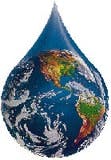According to the United Nations, 1.1 billion people worldwide lack access to safe drinking water, an issue the Safe Water Project hopes to help rectify.
It’s estimated that 22,000 people die each day due to diseases associated with polluted, unsafe water. In 2000, the U.N. announced its Millennium Development Goal of cutting in half the number of people who are unable to reach or afford safe drinking water by 2015.
That’s where Water Quality Association (WQA) member Orville L. Schaefer, CWS-V, CCO, comes in. He is the former owner of Schaefer Water Centers in Perryville, Mo. He bought the shop in 1972, and recalls taking WQA’s “Water Treatment Fundamentals” course in 1974. He’s been working in the water treatment industry ever since. Although he’s technically retired, you wouldn’t know it by his schedule.
Schaefer still takes care of eight small water systems. While he’s not looking for more business, he says the business seems to find him. Schaefer thinks of himself as a “circuit rider,” going from system to system, resolving issues.
After years of working with the Missouri Department of Natural Resources, the department began to contact him for solutions. Three years ago, he was appointed to the Missouri Safe Drinking Water Commission, representing small public water systems.
“The experience I gained from working with small water systems, plus encouragement from Dr. John Steffens, director of the Infopoverty Institute at the University of Oklahoma, led to my involvement with the Safe Water Project. For the past five years, Dr. Steffens has played a key role in organizing the first through fifth World Conferences on Infopoverty in collaboration with other agencies at the U.N. headquarters in New York,” he said.
“The goal of the Safe Water Project is to bring water professional organizations and individuals together to develop a ‘how-to’ road map for leadership within Third World countries, to develop a sustainable, potable water infrastructure in the small, rural communities within their borders,” Schaefer said.
“Often times, Rotary and faith-based groups work with missionaries to get into the afflicted areas, but this work isn’t necessarily sanctioned by their governments,” Schaefer said. “Unless you can get Third World countries interested, that goal will never be met.”
Schaefer hopes to garner interest from other WQA members, who might be able to work on the Safe Water Project. He’ll present a Meet the Expert session during WQA Aquatech USA on Wednesday, March 29 from 3:30 to 4 p.m. All Meet the Expert sessions take place in the WQA booth on the exhibition/trade show floor.
“I would like to see getting all these providers together and find out what it would take, what kind of problems they could address. To get pros in the water industry and individuals to come together and put this kind of agenda together would be terrific,” said Schaefer.
“The biggest issue I have right now is getting professional people to come in and help, and it probably has to be volunteer help. Somewhere down the line, we’ll have to get as many resources as possible involved,” he said.
Source: WQA


